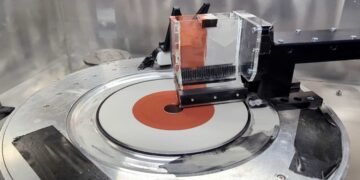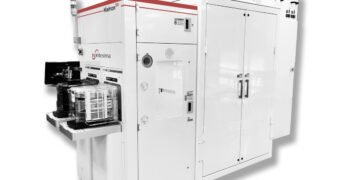Printable two-dimensional superconducting monolayers

Figure (a) shows samples of NbSe2 atomic models and merlion statues fabricated using the exfoliated flakes and 3D printing technology. Figure (b) shows the photograph of the exfoliated flakes dispersed in solvent for a range of 2D materials. Courtesy: Nature Materials.
Highly crystalline 2-D transition metal dichalcogenide superconductors and their associated (van der Waals) heterostructures provide a rich platform for the investigation of new quantum physics and exotic superconductivity. This is due to their 2-D non-centrosymmetric lattice with a strong spin-orbital interaction.
A National University of Singapore research team led by Prof Lu Jiong, from the Department of Chemistry, NUS in collaboration with Prof Kostya S. Novoselov from Materials Science and Engineering, NUS has developed a universal electrochemical exfoliation method for the synthesis of highly-crystalline, two-dimensional superconducting monolayers (2DSC). These 2DSC monolayers are obtained in a stable suspension with monolayer production yield of up to 75%. They can be used for fabricating artificially designed structures that exhibit superconducting properties. This includes printing wafer-level 2-D superconducting wires and constructing superconducting composites using 3-D printing techniques.
The method leverages on the co-intercalation of ammonium cations solvated with a large amount of neutral solvent molecules to peel off 2-D monolayers from the 3-D bulks. This strategy not only allows for sufficient intercalation of various layered crystals, but also significantly reduces excessive charging and structural damages of the layered hosts. This is crucial for the exfoliation of high quality and large-sized 2DSC monolayers. In addition, 2DSC monolayer suspension can be exploited to fabricate artificial van der Waals heterostructures that behave as periodic Josephson junction arrays, which can potentially be used in the fabrication of novel superconducting devices.
Prof Lu said, “This universal electrochemical exfoliation approach can be used for the scalable production of a library of solution-processable, highly crystalline 2DSC monolayers, offering huge technological potential for the development of new material properties beyond the reach of existing layered structures.”



































